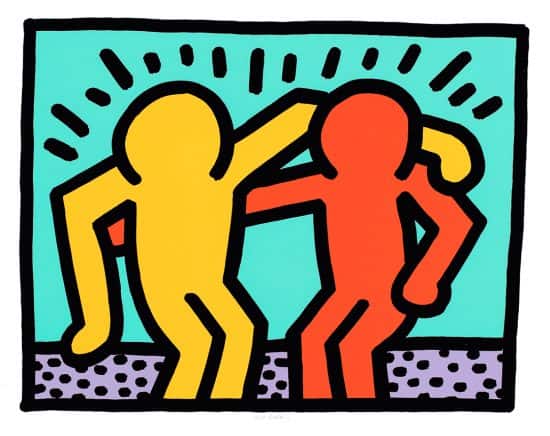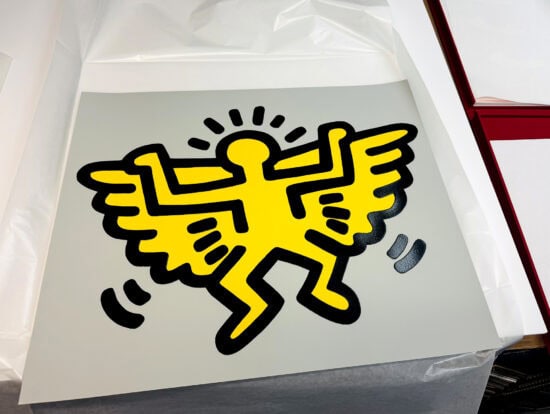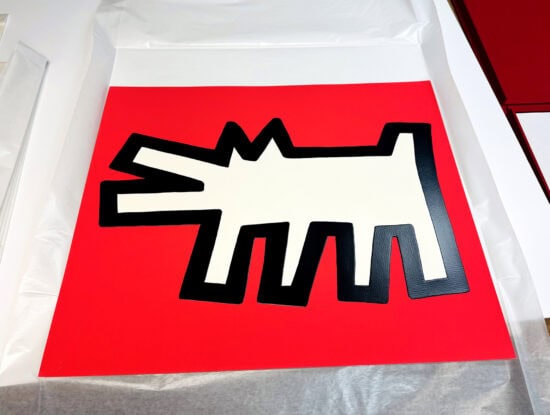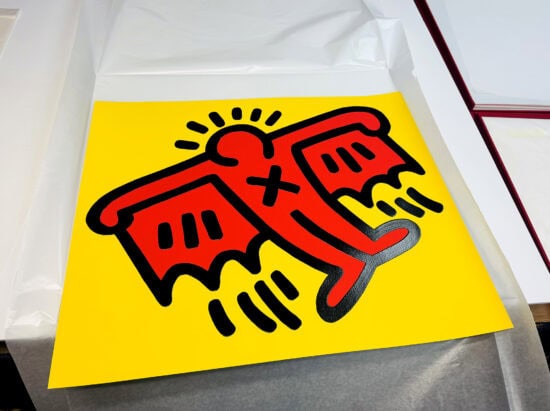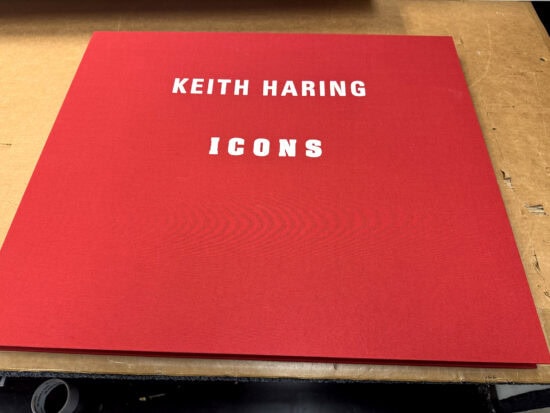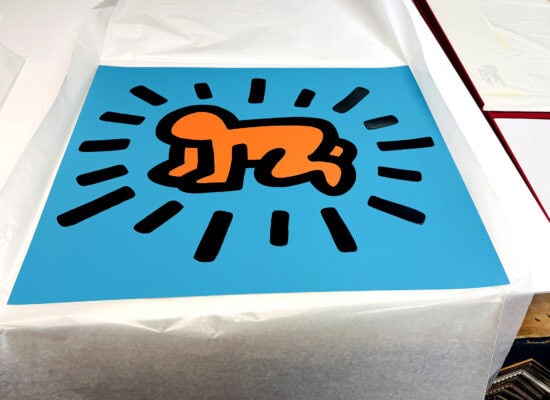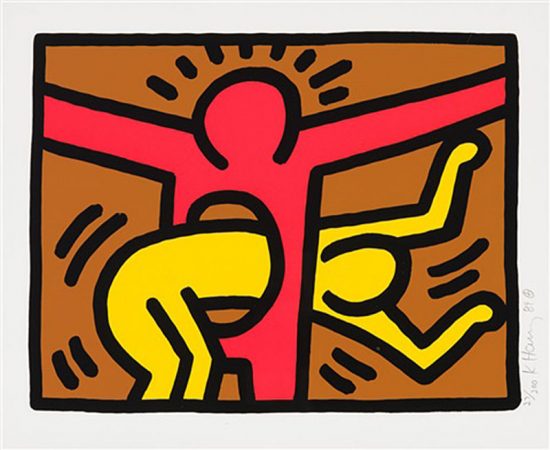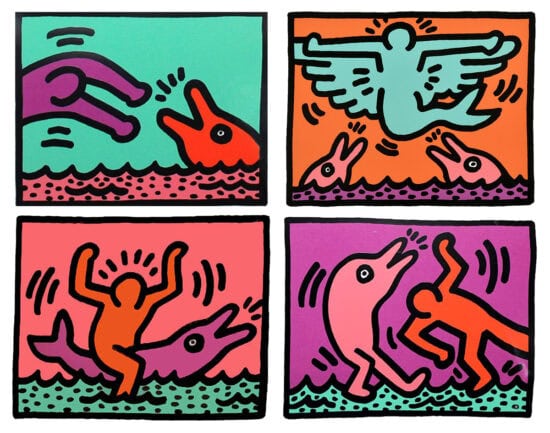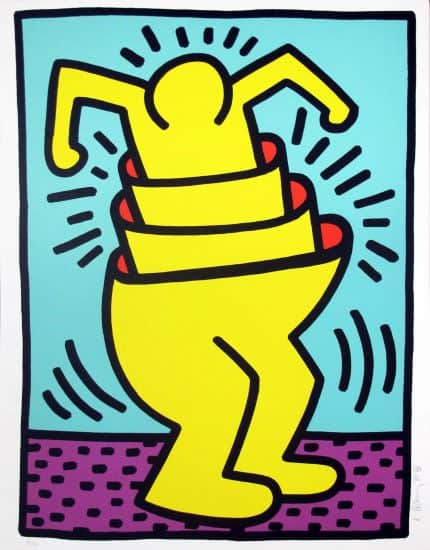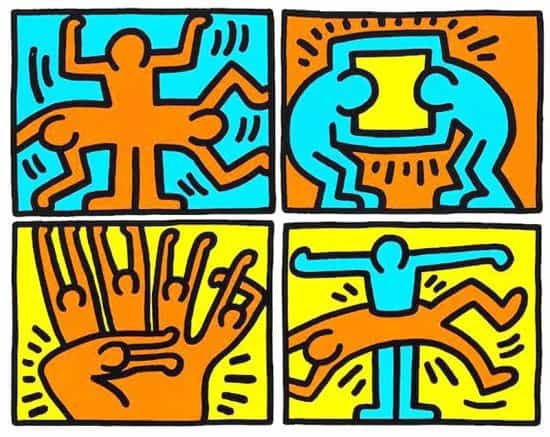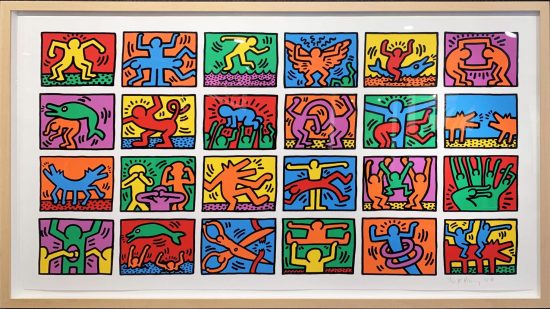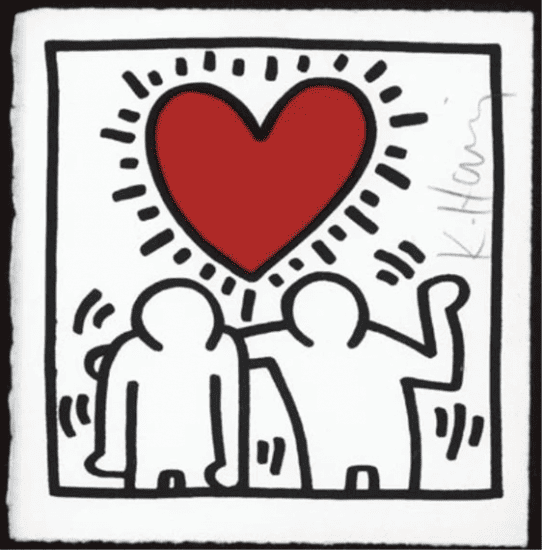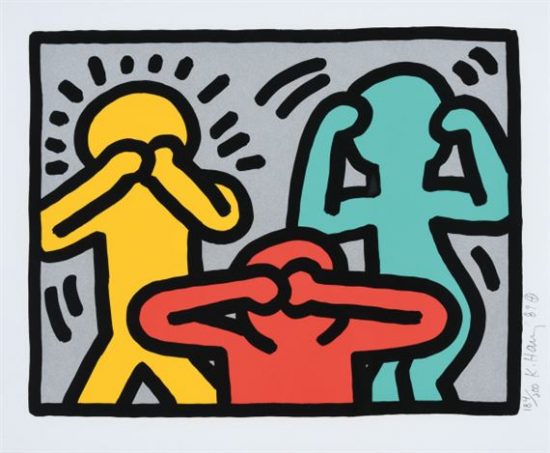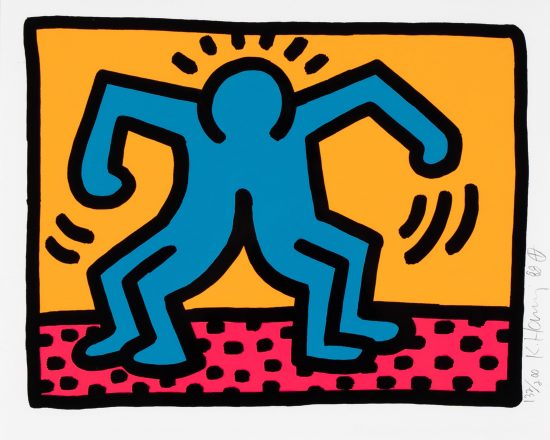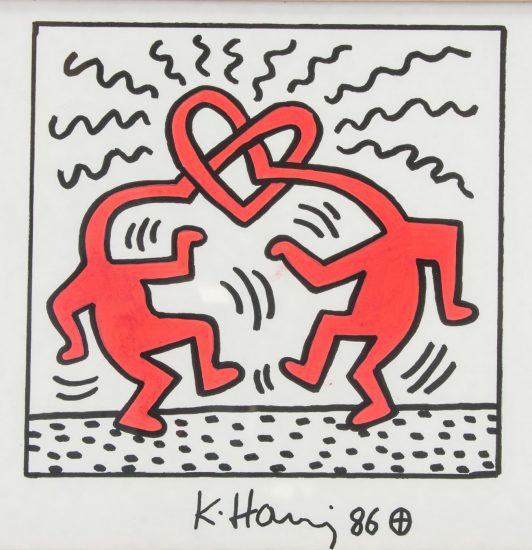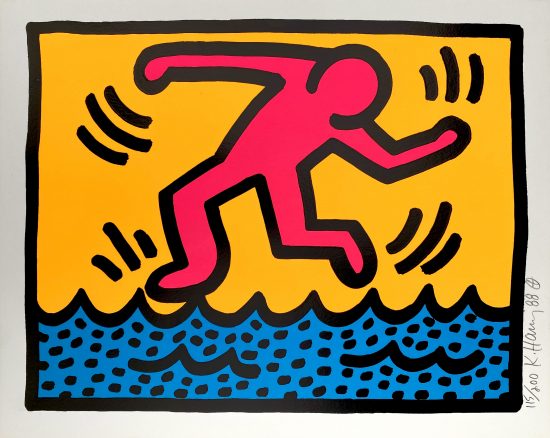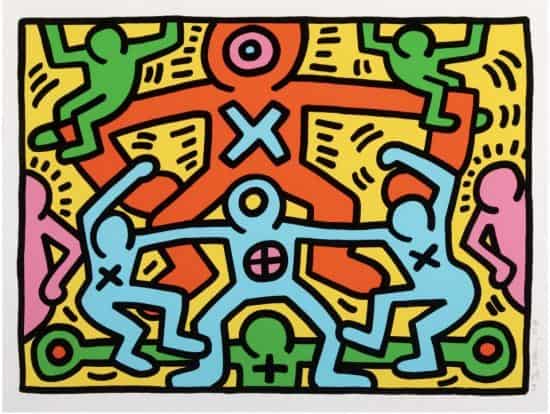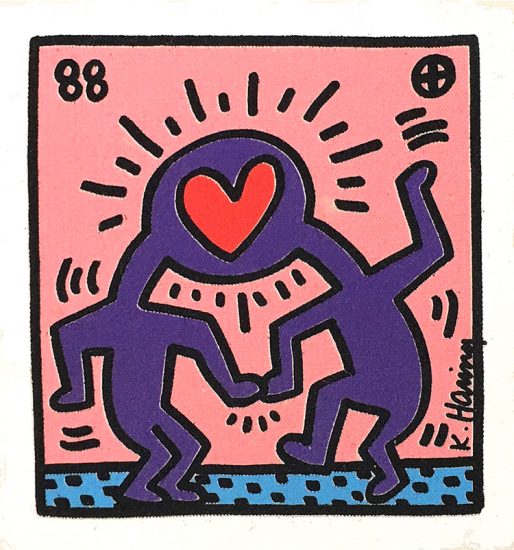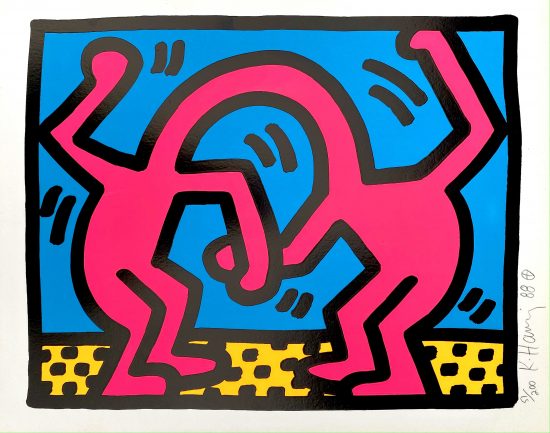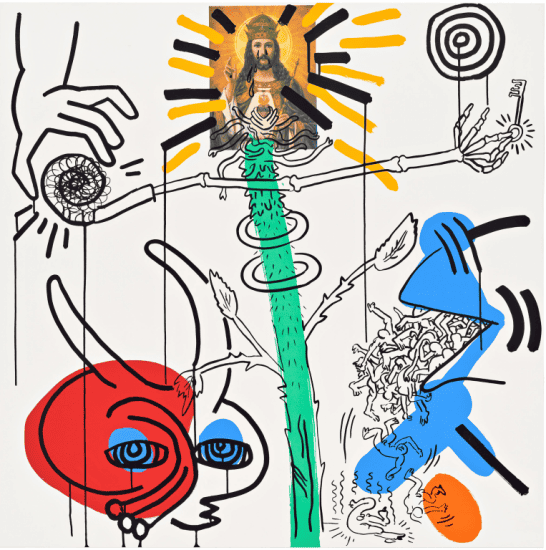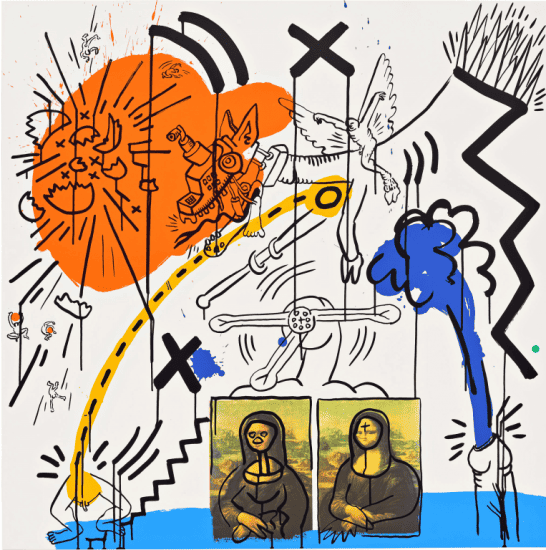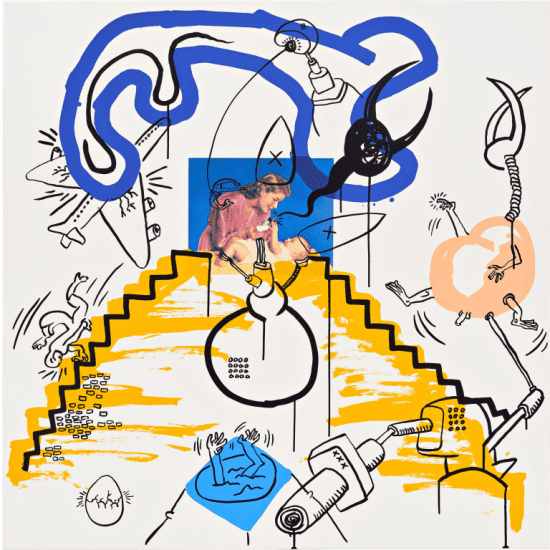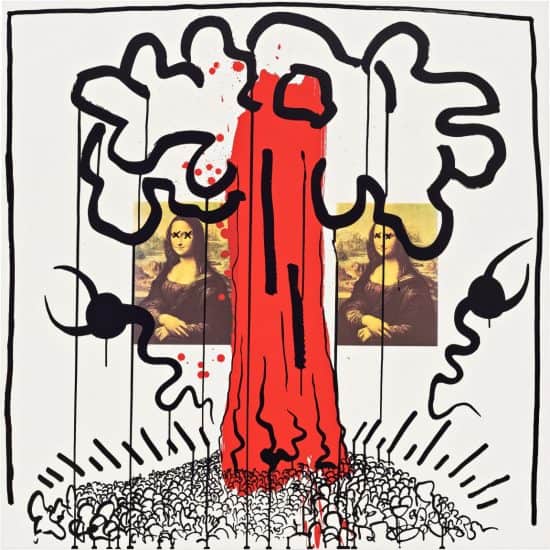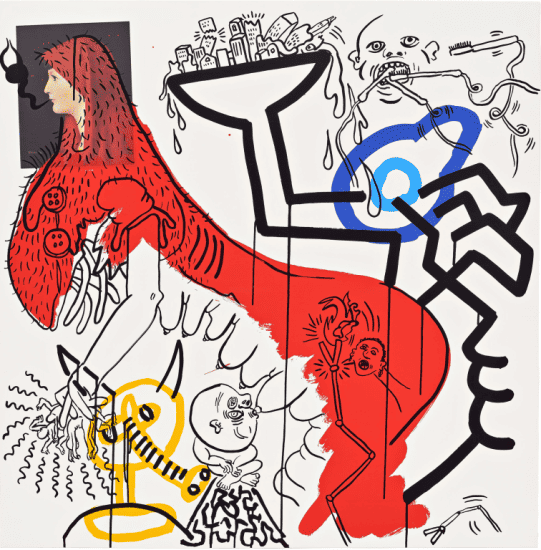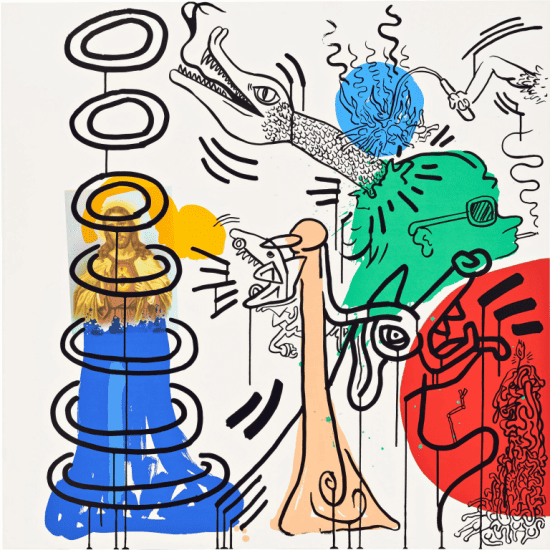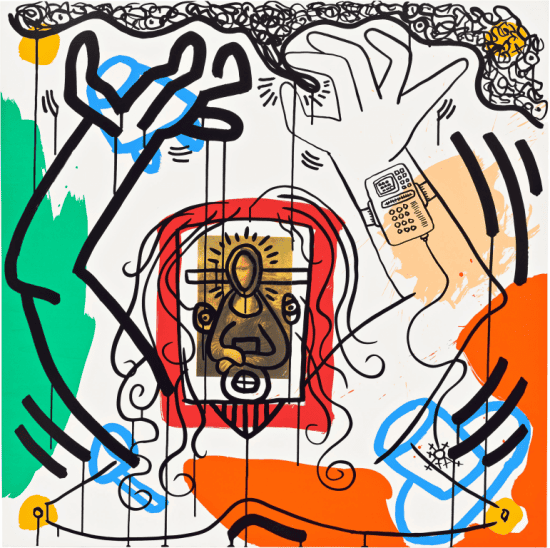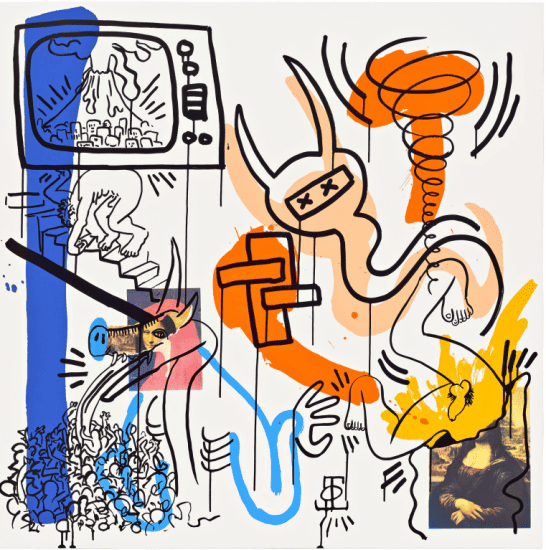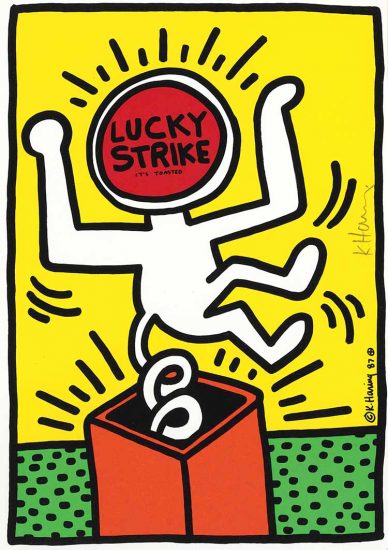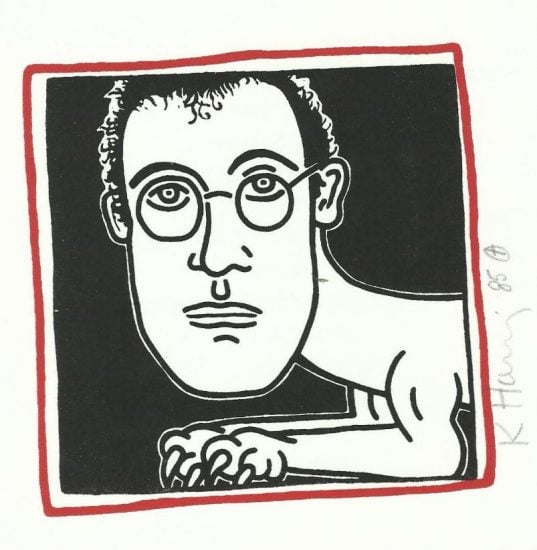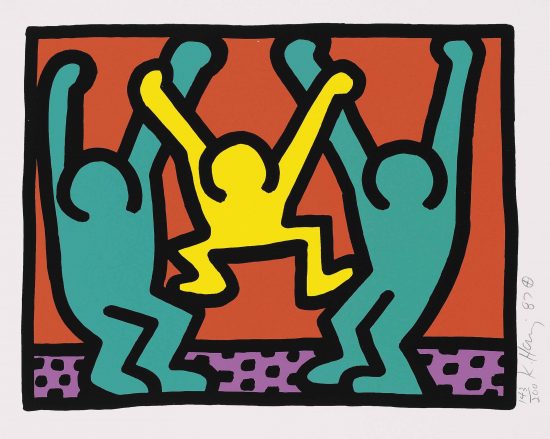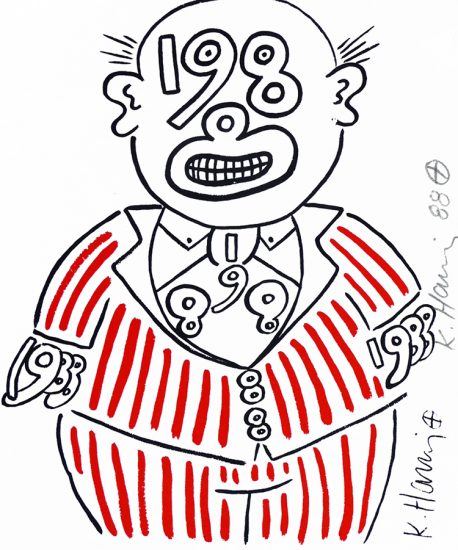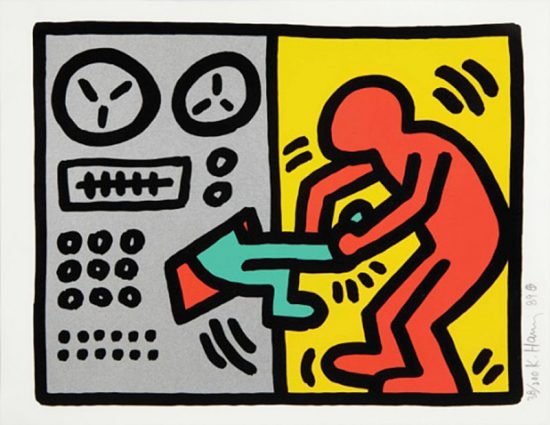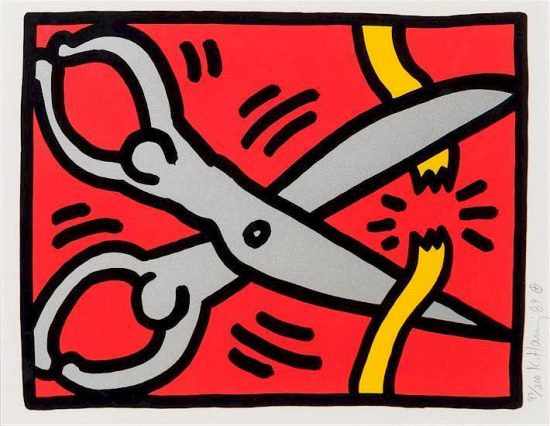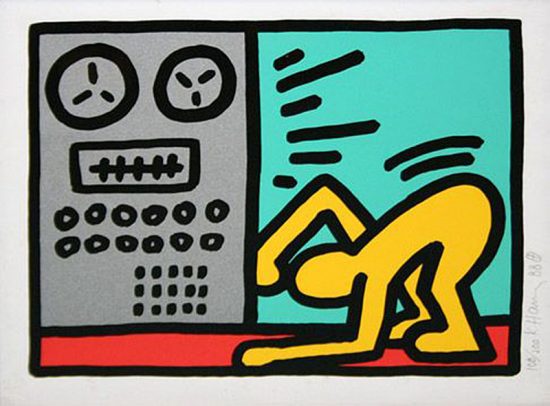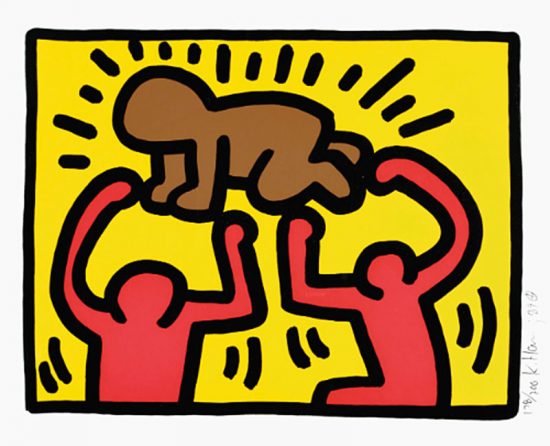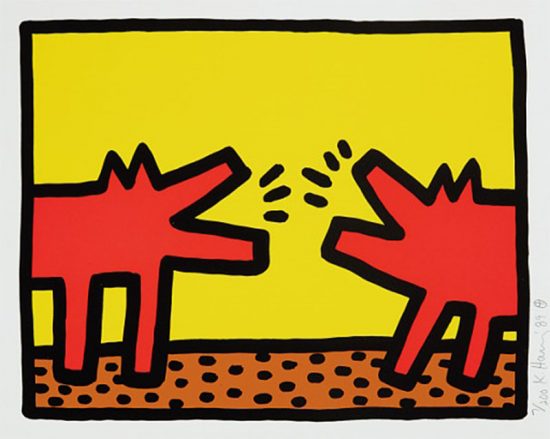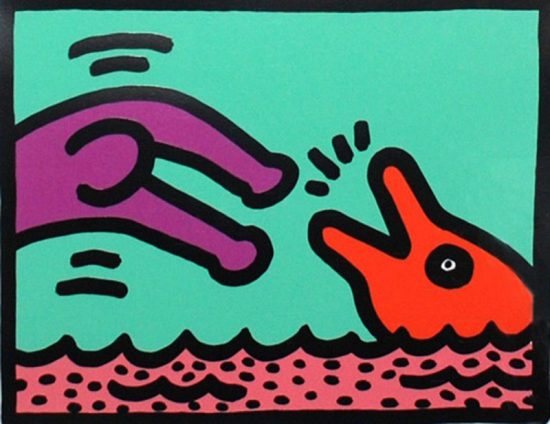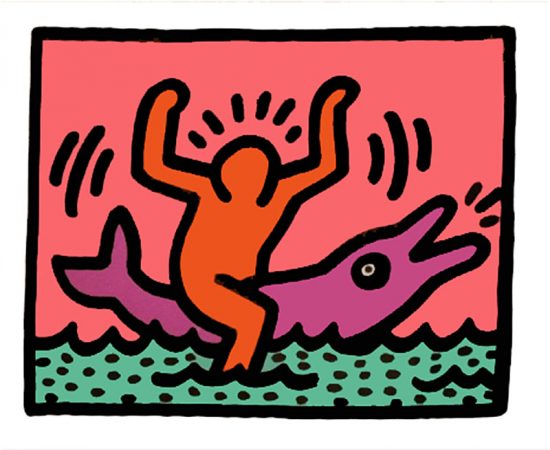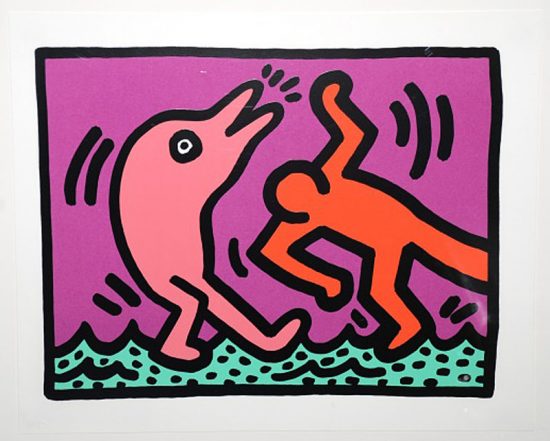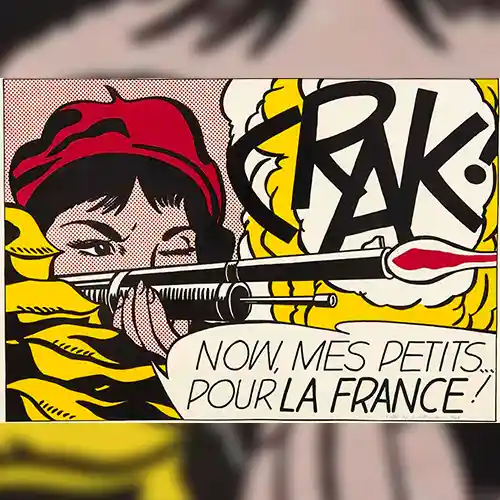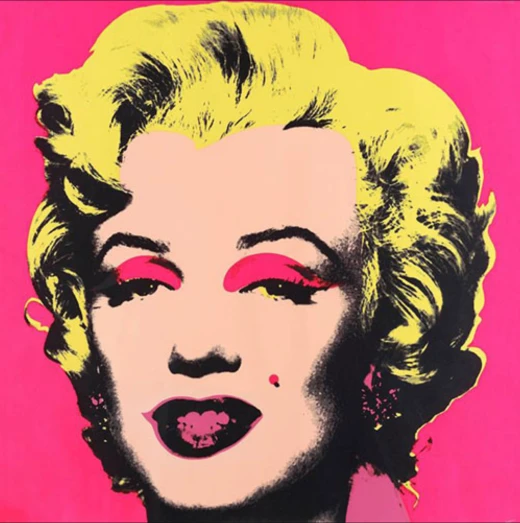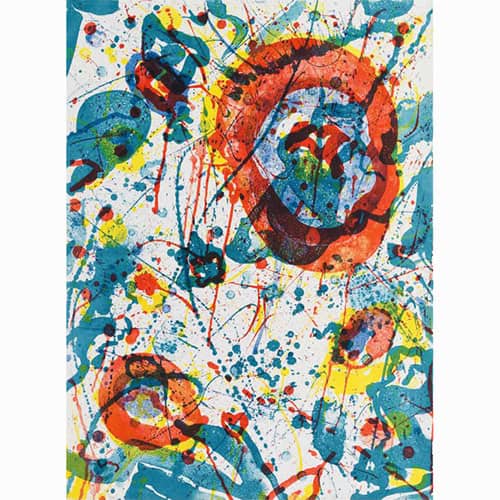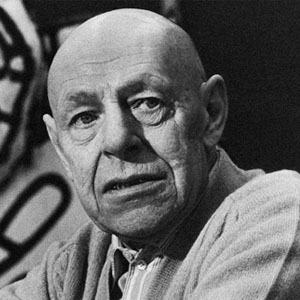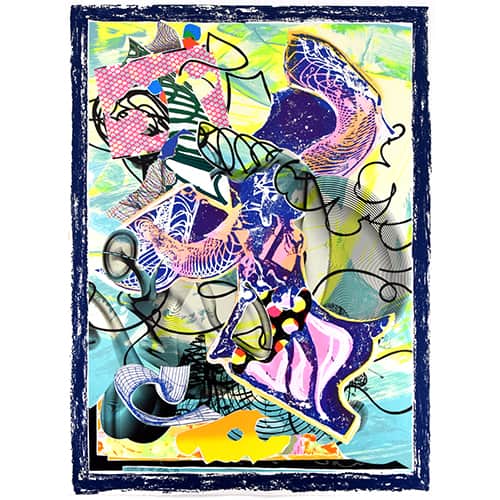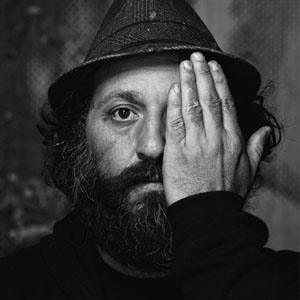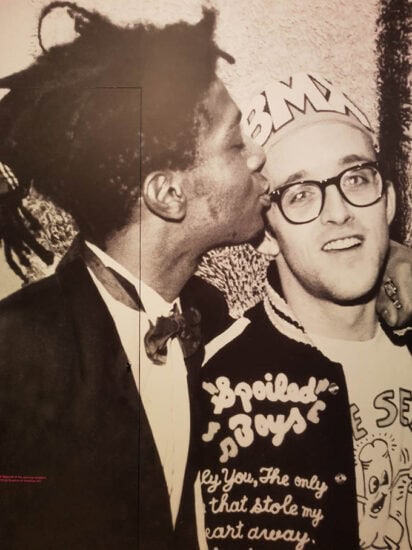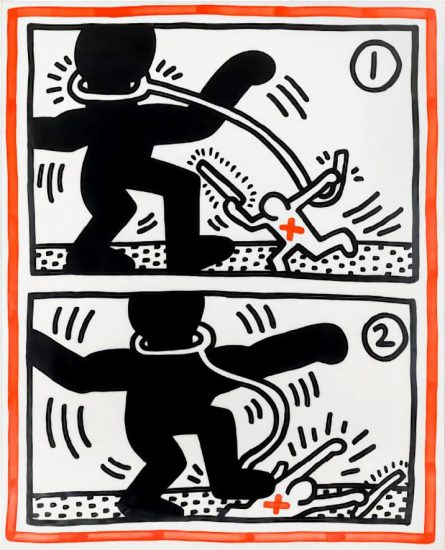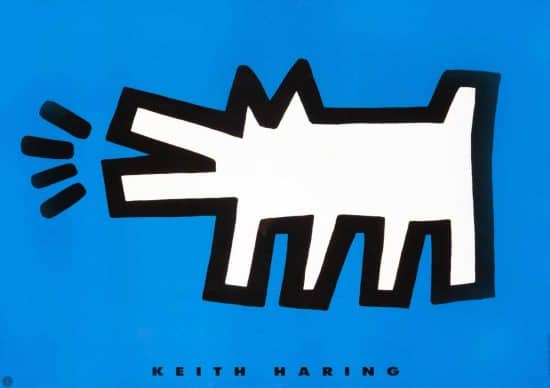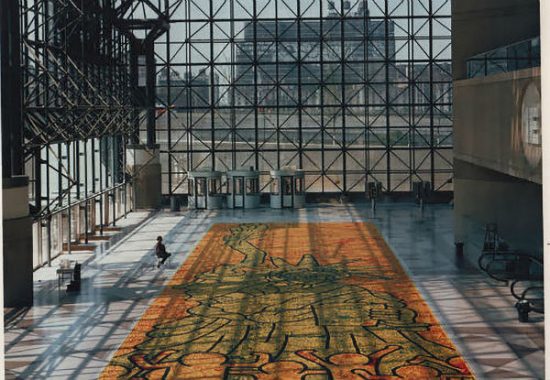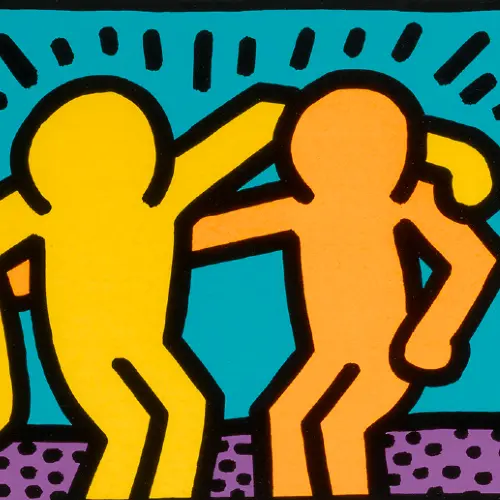Keith Haring Dancing Figures: Dancing Man, Dancing Dogs
Keith Haring’s simplistic yet iconic and notably recognizable figures are images that are designed to engage the viewer with semi-hieroglyphic motifs through Haring’s specific visual language.
One of the many symbols Keith Haring has ingrained in his works are dancing figures. Typically considered to reflect the artists love for hip hop as it was emerging into the New York club scene and in particular, the gay scene of the ‘70s and ‘80s. The bold gestural double lines that typically surround his figures have come to symbolize freedom and ecstasy, occasionally appearing in multiples either holding hands or stacked together, creating an air of solidarity and community. These are not the only meanings behind Haring's dancing figures; they were also meant to evoke fun and joy within the community, an attempt to radiate positive energy.
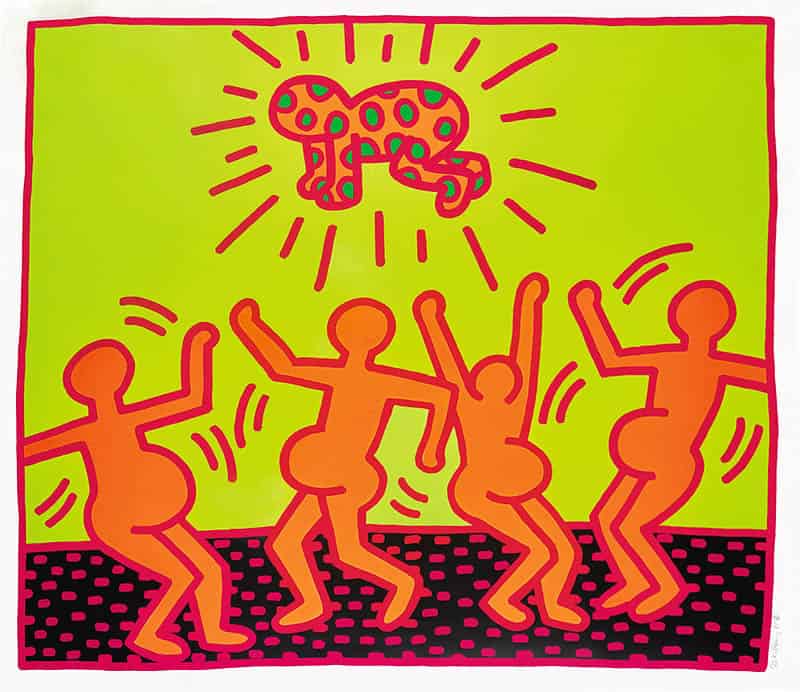
His art was rising to prominence around this time, and it has been noted that Haring would often listen to rap while painting, finding inspiration in the movements and energy that came forth.
He used to paint one stroke at a time to the rhythm of whatever he was listening to.
Fellow artist and friend Kenny Scharf recalled about his friend, Keith Haring.
Trying to match that energy and the movement of music, Haring would create contorted figures that could backend and more to replicate the movements of break dancers in action.
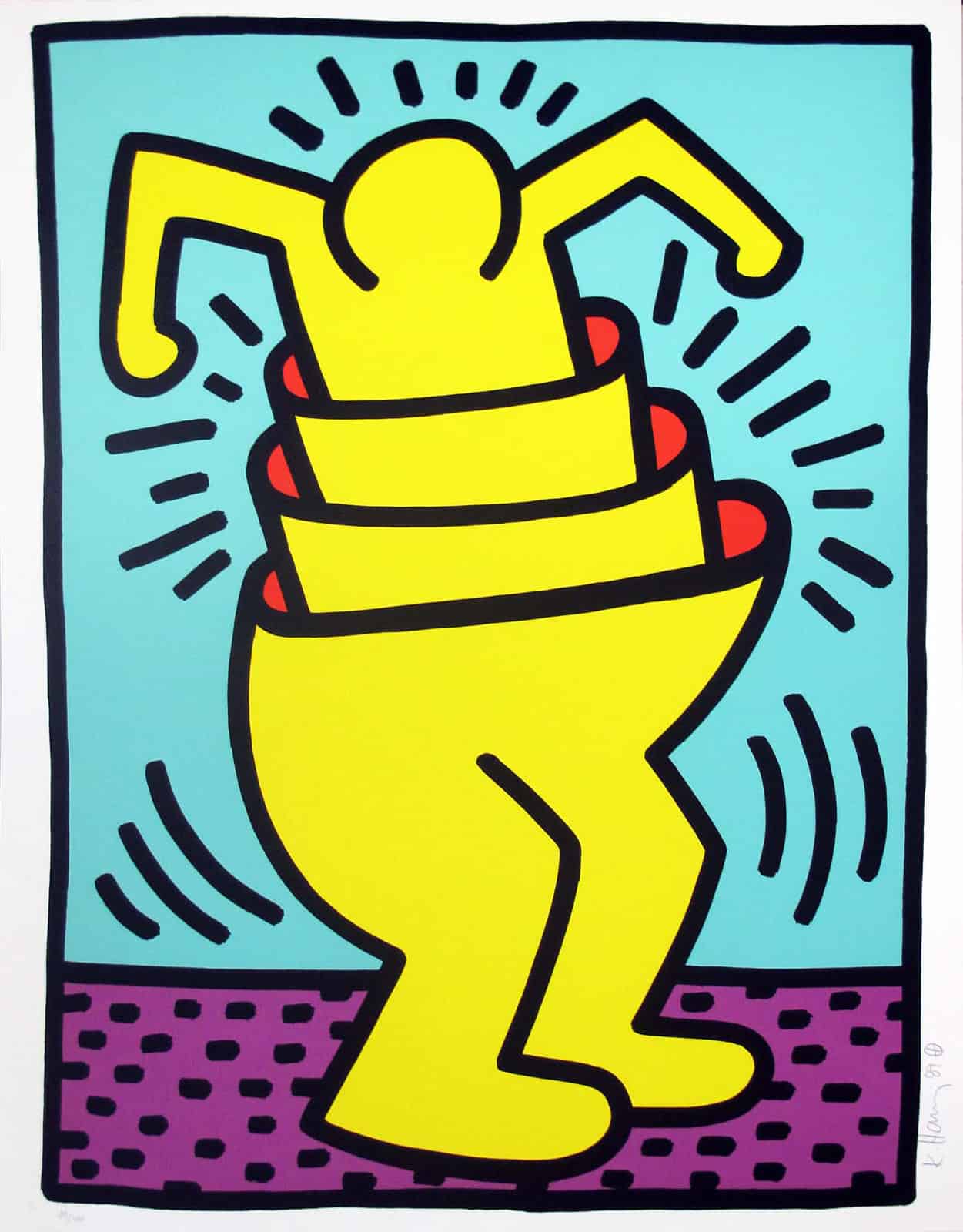
Keith Haring’s Dogs, depending on your view on themes of death, does not match the energy that life brings to us and instead subverts back to the imagery of ancient Egypt and the importance of their polytheistic Gods in the form of hieroglyphs. Dogs in Haring’s works typically illustrate the abuses of power through politics and questions ultimate obedience; however Dancing Dogs maintains a separate meaning. Recalling the ancient Egyptian God Anubis, a dog like God who watched over the dead, Haring incorporates these themes of Anubis and Death into his works by also portraying the dogs handling human-esque forms. It has also been related to the allegorical Christian notion of ‘The Dance of Death’, a literary or pictorial representation of a procession or dance of both living and dead figures, the living arranged in order of their rank, from pope and emperor to child, clerk, and hermit, and the dead leading them to the grave.
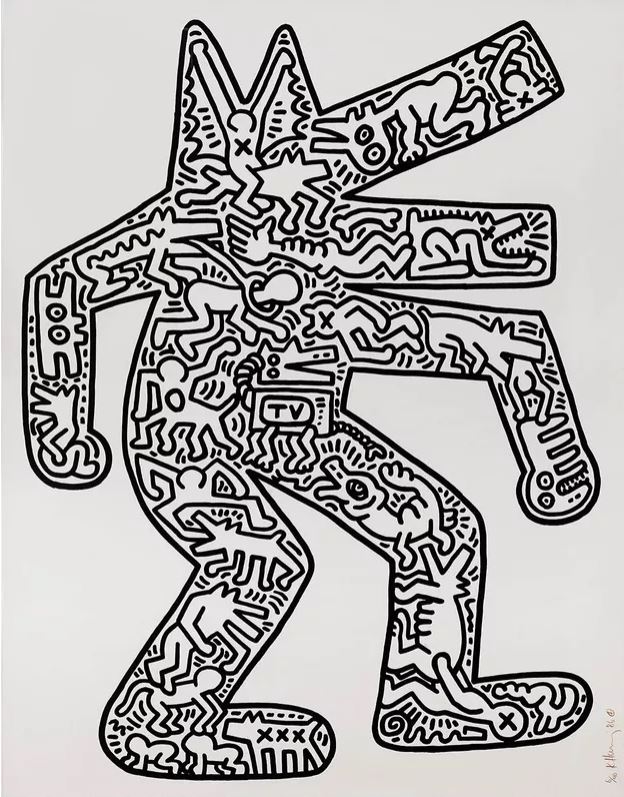
Dogs in Haring’s works continue to be representatives of humans and animals, continuously used through his career to explore semiotics and the changing nature of meaning in language. Matching ‘Dogs’ together or pairing them with other motifs from his repertoire, ‘in different combinations they were about the difference between human power and the power of animal instinct’, nonetheless always discussing greater issues of contemporary society.
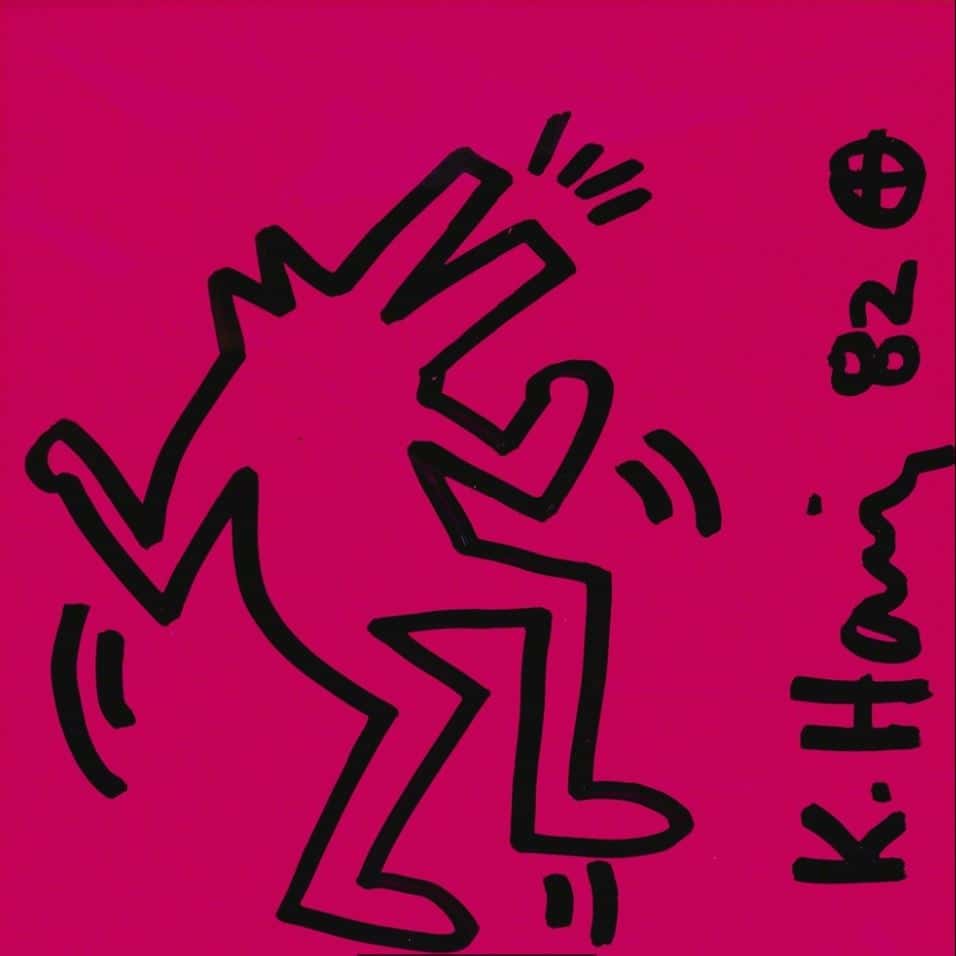
Haring once said ‘drawings don’t try to imitate life; they try to create life, to invent life’ - an ethos that very much captured the essence of his dancers.
What is the Keith Haring Dancing Men?
The Dancing Men in Keith Haring's work are simplistic figures that are always drawn in movement. They can be seen in prints dancing either solo or in multiples, stacked on top of each other, holding hands, or interreacting with other motifs in the work.
What is the Keith Haring Dancing Men represent?
The dancing men were made in order to evoke fun and joy, along with solidarity within the community.
Is the Dancing Men a Keith Haring motif?
Yes; The dancing men can be seen in many of Haring's works, such as in the Fertility Suite, within the different Pop Shops, and more.
Keith Haring Best Buddies
Keith Haring’s Best Buddies is one of the most recognizable logos in the world. Featuring two simplistic figures embracing at the center of the image, with rays emanating from their shared hug, Best Buddies is a heartwarming image. The background of the image is uncomplicated, only featuring a sky and dotted ground, allowing the two figures and their idyllic relationship in the foreground to shine as the focus of the work. The two figures seem to be facing each other as they embrace, sharing a moment of compassion for each other. Always printed in different colors, the two, like all of Haring’s outlined figures, remain faceless and genderless. As such, they are able to act as universal stand-ins for humanity as a whole, while still representing the importance of bridging and accepting difference. Viewers are able to imagine whoever they wish in that embrace, and the open-ness of this image makes it a powerful representation of friendship and love that can have a widespread impact. With their arms wrapped around each other, the two figures in are a hopeful image that represent humanity at its best.
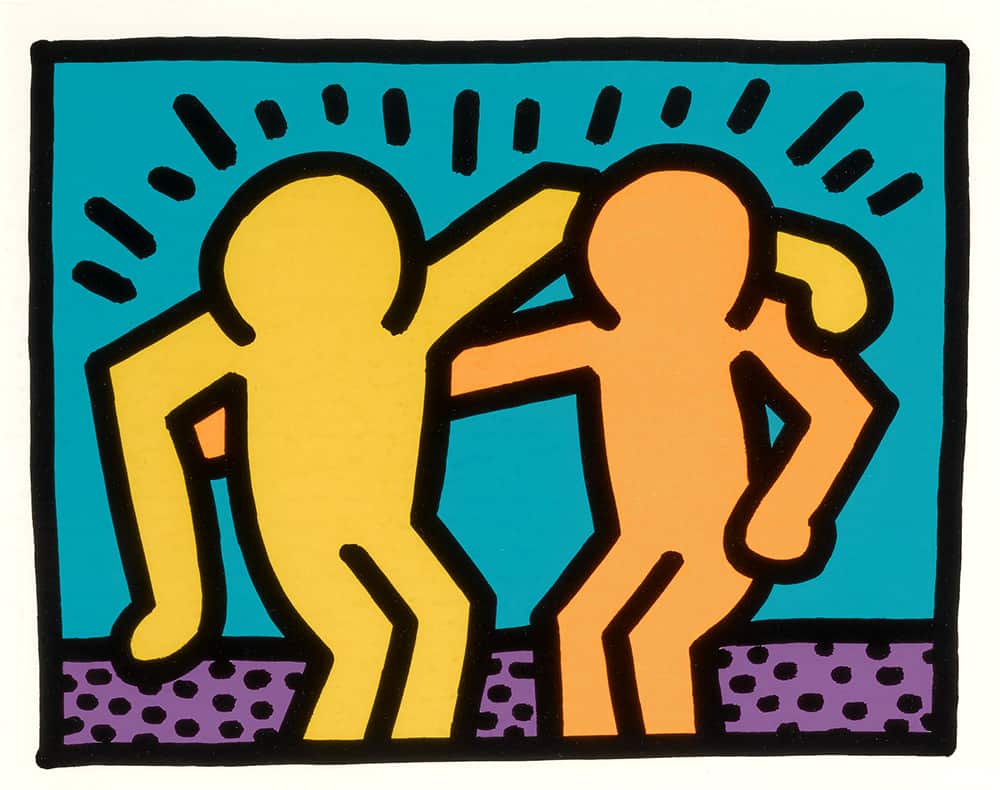
Best Buddies is named after the non-profit organization of the same name. Best Buddies is a charity organization that is dedicated to supporting individuals with intellectual and developmental disabilities. Haring designed and donated the logo in order to support the organization’s mission. Anthony K. Shriver, the International Founder and Chairman of Best Buddies, talks about the power of Haring’s work, and the importance of the logo: “It is hard to imagine any artist who could have captured the spirit and mission of Best Buddies better…His artwork is so simple and spot-on in capturing the concepts of friendship, togetherness and one person helping another.
"one-to-one affection and acceptance"
You just look at the Best Buddies logo and your heart beats a bit faster—you can feel the power of friendship coming to life right before your eyes.” Described as an image that represents “one-to-one affection and acceptance” on the Best Buddies website, the simplicity of the design makes it an accessible and relatable image of acceptance. Though Haring provides no hints as to what the relationship between the two figures might be, it is clear from their embrace that the viewer is witnessing a kind-hearted moment.
Haring’s artistic practice was often socially engaged, as Haring involved his art with social justice causes frequently—the artist advocated for safe sex and AIDS awareness, anti- Apartheid, and more throughout his career, and often used his art to promote causes, movements, and organizations that he supported. Best Buddies is a wonderful example of the way that Haring was able to mobilize his art to support causes he was passionate about. By donating his artwork at a point in his career where he had achieved great fame, his logo played a big role in launching Best Buddies into the public eye and making their mission known.
Associating his work with Best Buddies widened the audience for the work that Best Buddies does. The theme of friendship was also one of particular importance to Haring, whose friendships fueled much of his art. As he was friends with other artists, such as Basquiat and Andy Warhol, as well as singers like Madonna, Haring’s art was heavily informed by his interactions with these influential figures of the time. Either meeting those artists while at school in New York or through his career, his work always reflected those relationships and was indebted to the larger artistic community of which he was part. The Best Buddies organization still uses Haring’s Best Buddies as their logo to this day. Haring’s approachable style and the fame he had already amassed at this point of his career makes his work a perfect choice for a logo of this nature, which is able to speak to a large audience and impact a large number of
people.
Haring’s Best Buddies was the last print series he was able to complete before his death in 1990. The motif of two figures embracing first appeared in his imagery in 1987 in Keith Haring's Pop Shop series. It is one of his most popular and widely circulated images, and a particularly heart- warming one. An image of goodwill and affection, the lasting legacy speaks to the power of kindness and charity. As it continues to circulate, Haring’s Best Buddies continues to spread an uplifting message that solidifies Haring’s importance as an artist and ability to influence not only the art world, but a wider public, and to do so for the greater good. Even though it was an image created at the end of his life and career, Best Buddies has had and continues to have an incredible impact, and will for years to come, and Haring's work continues to play an important role in the world.
Browse our fine art collection of Keith Haring artwork.


